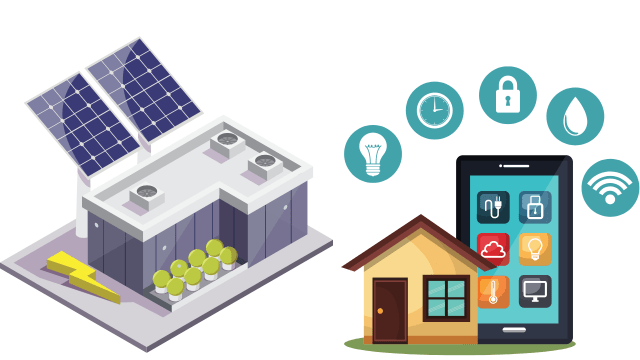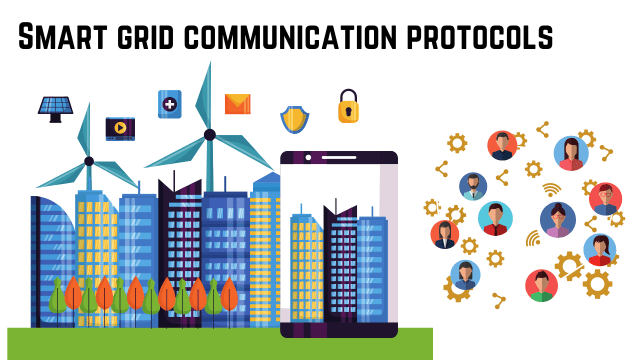Rapid technological advancements have paved the way for smart grids, transforming the traditional power distribution system into a more efficient and sustainable network. At the heart of this transformation are smart grid communication protocols, which enable seamless data exchange and real-time monitoring across various grid components. In this article, we will delve into smart grid communication protocols, exploring their significance, key features, and the future of energy management. So let’s embark on this journey to understand how smart grid communication protocols are revolutionizing the way we manage and consume energy.
Table of Contents
- Introduction to Smart Grids
- Understanding Communication Protocols
- Importance of Smart Grid Communication Protocol
- Key Features of Smart Grid Communication Protocol
- Types of Smart Grid Communication Protocol
- Advantages and Challenges
- Future Trends in Smart Grid Communication Protocol
- Conclusion
Introduction to Smart Grids
Smart grids are advanced power distribution networks integrating various technologies to optimize energy generation, transmission, and consumption. Unlike traditional grids, smart grids leverage digital communication and automation to enhance efficiency, reliability, and sustainability.
Understanding Communication Protocols
Communication protocols serve as the foundation for seamless data transfer and control within the smart grid. These protocols facilitate the interaction between devices, such as smart meters, sensors, and control systems. By standardizing communication, protocols enable interoperability and efficient data exchange.
Importance of Smart Grid Communication Protocols
Smart grid communication protocols play a vital role in enabling advanced functionalities within the grid. They allow for real-time monitoring, demand-response mechanisms, load balancing, and integration of renewable energy sources. These protocols ensure secure and reliable data transfer, enabling utilities and consumers to make informed decisions for efficient energy management.
Best GPS Fleet Managment System 2023 : See NOW
Key Features of Smart Grid Communication Protocols
Smart grid communication protocols possess several key features contributing to their effectiveness in energy management. These features include:
Scalability
Smart grid communication protocols are designed to accommodate the growing number of devices and users within the grid. They can handle large-scale deployments and support future expansions seamlessly.
Security
Given the critical nature of energy infrastructure, security is a paramount concern. Smart grid communication protocols employ robust encryption and authentication mechanisms to safeguard data from unauthorized access and cyber threats.
Reliability
Reliable communication is essential for efficient grid operations. Smart grid communication protocols ensure reliable data transmission, minimizing disruptions and enabling effective coordination among grid components.
Flexibility
To adapt to evolving energy needs and technological advancements, smart grid communication protocols offer flexibility in supporting various communication technologies and standards.
Types of Smart Grid Communication Protocols
There are several communication protocols utilized in smart grid deployments. Here are some of the commonly used protocols:
DNP3 (Distributed Network Protocol)
DNP3 is widely used for communication between utility control centres and field devices. It offers robust data integrity, time synchronization, and fault detection capabilities.
Modbus
Modbus is a widely adopted protocol for communication between devices in industrial automation, including smart grid components. It is known for its simplicity and versatility.
IEC 61850
IEC 61850 is an international standard for communication within substations and power systems. It enables interoperability among devices from different vendors.
Zigbee
Zigbee is a low-power wireless communication protocol suitable for connecting devices in home area networks. It facilitates energy management at the consumer level, supporting demand response and energy conservation.

Advantages and Challenges
Smart grid communication protocols offer numerous advantages, such as enhanced reliability, improved grid management, and efficient energy utilization. However, their implementation also presents challenges, including interoperability issues, cybersecurity concerns, and the need for regular updates to accommodate technological advancements.
Future Trends in Smart Grid Communication Protocols
As technology evolves, smart grid communication protocols will witness significant advancements. Some of the future trends include the adoption of 5G networks for faster and more reliable communication, the integration of artificial intelligence for advanced analytics, and the utilization of blockchain for secure and transparent transactions within the grid.
Conclusion
Smart grid communication protocols are at the core of the transformation happening in the energy sector. They enable seamless data exchange, real-time monitoring, and efficient energy management. These protocols’ scalability, security, reliability, and flexibility lay the foundation for a sustainable and intelligent energy infrastructure. Embracing smart grid communication protocols is crucial for realizing the full potential of a smarter and greener future.
Frequently Asked Questions (FAQs)
1. How do communication protocols for smart grids improve energy management?
Real-time monitoring, demand-response mechanisms, load balancing, and integrating renewable energy sources are made possible by smart grid communication protocols, which results in effective energy management.
2. What distinguishing characteristics mark smart grid communication protocols?
To handle the expanding number of devices, guarantee data integrity, reduce disruptions, and react to changing energy needs, smart grid communication protocols offer scalability, security, dependability, and flexibility.
3. What are the most widely adopted communication protocols for smart grid deployments?
The DNP3, Modbus, IEC 61850, and Zigbee smart grid communication protocols are a few of the more popular ones.
4. What benefits can smart grid communication methods provide?
Smart grid communication protocols improve efficiency and sustainability by enhancing grid management, energy use, and dependability.
5. What are the protocols for smart grid communication going forward?
Future directions for quicker, more sophisticated, and more secure grid connectivity include implementing blockchain, 5G networks, and artificial intelligence.
GPS location tracker: See NOW

